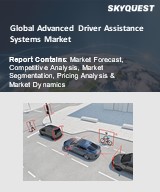
Report ID: SQMIG45A2350

Report ID:
SQMIG45A2350 |
Region:
Global |
Published Date: July, 2024
Pages:
196
|
Tables:
95 |
Figures:
76
Drivers
Rise in the Development of In-vehicle HMI Design
Stringent Government Regulations on Passenger Safety and Increased Consumer Demand
Restraints
High Initial Costs Can Hamper Market Growth
Complexity and Reliability Concerns
Our industry expert will work with you to provide you with customized data in a short amount of time.
REQUEST FREE CUSTOMIZATIONWant to customize this report? This report can be personalized according to your needs. Our analysts and industry experts will work directly with you to understand your requirements and provide you with customized data in a short amount of time. We offer $1000 worth of FREE customization at the time of purchase.

Report ID: SQMIG45A2350